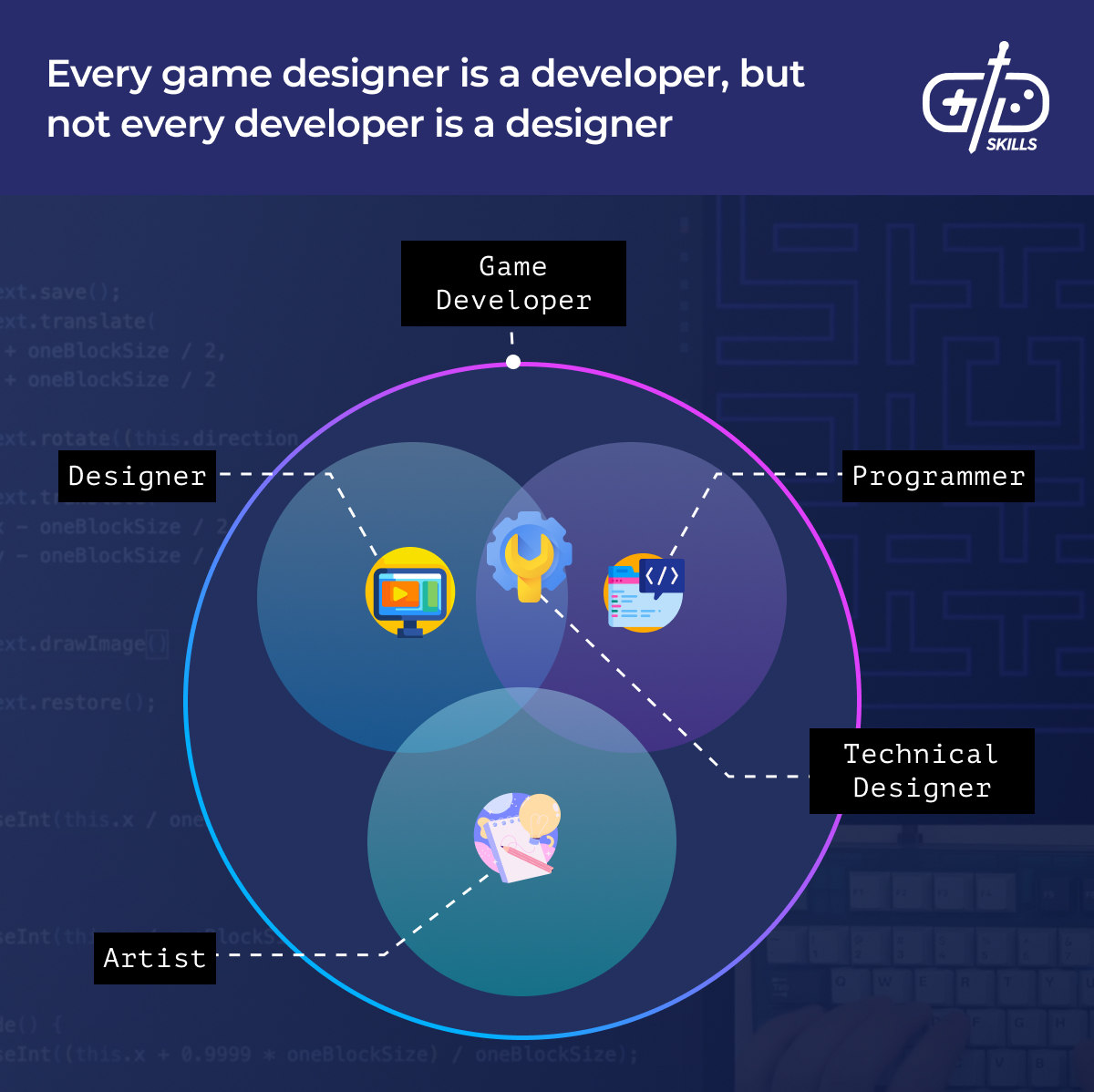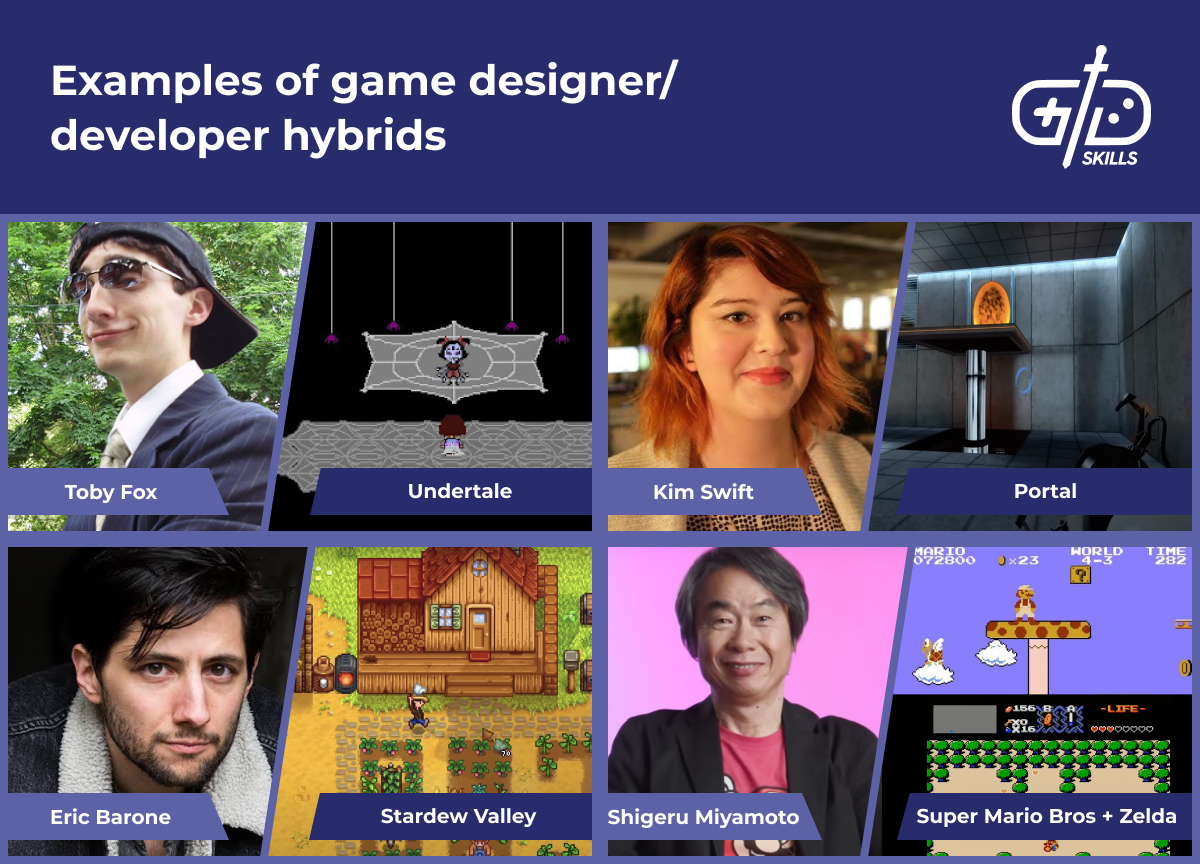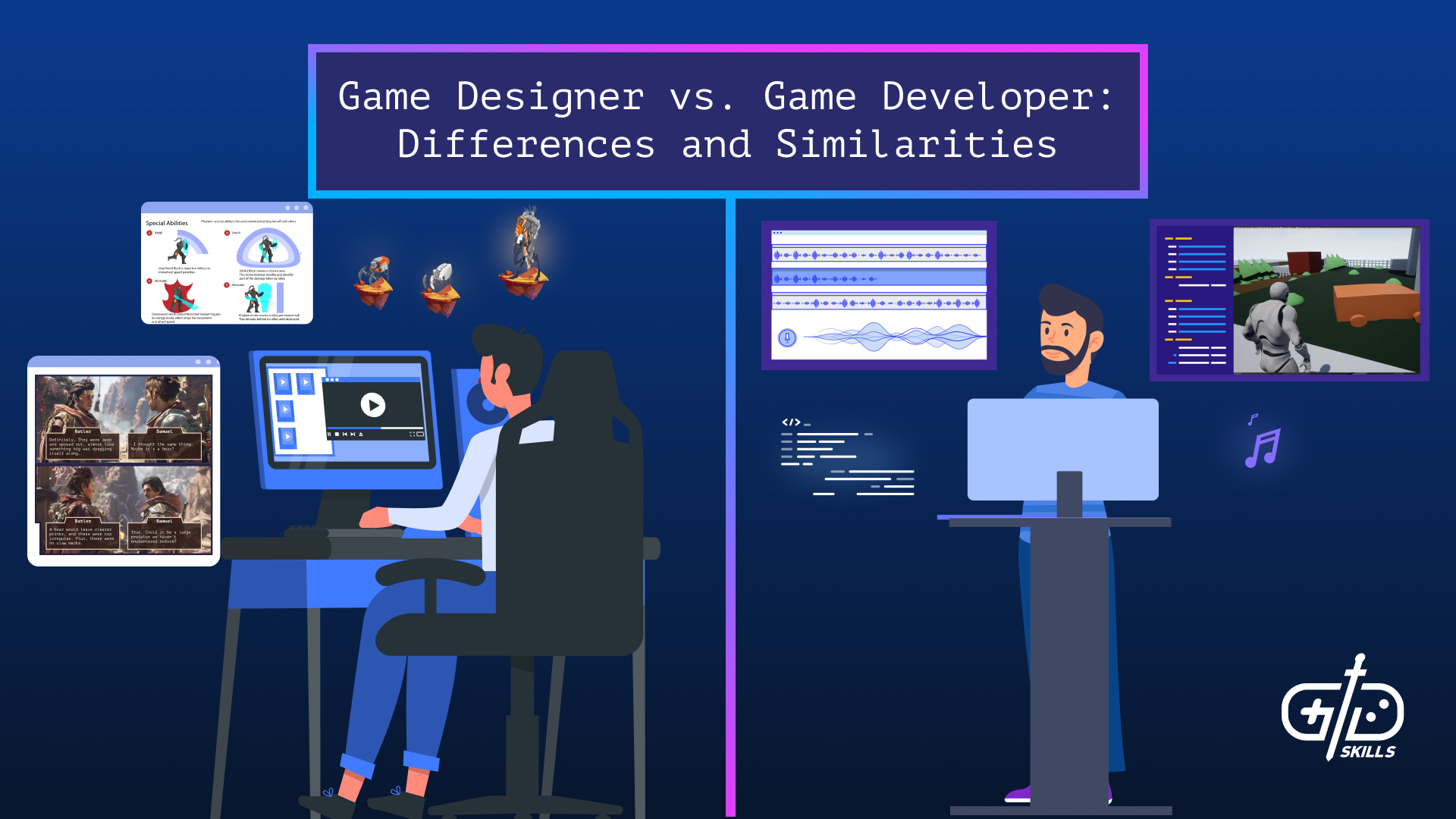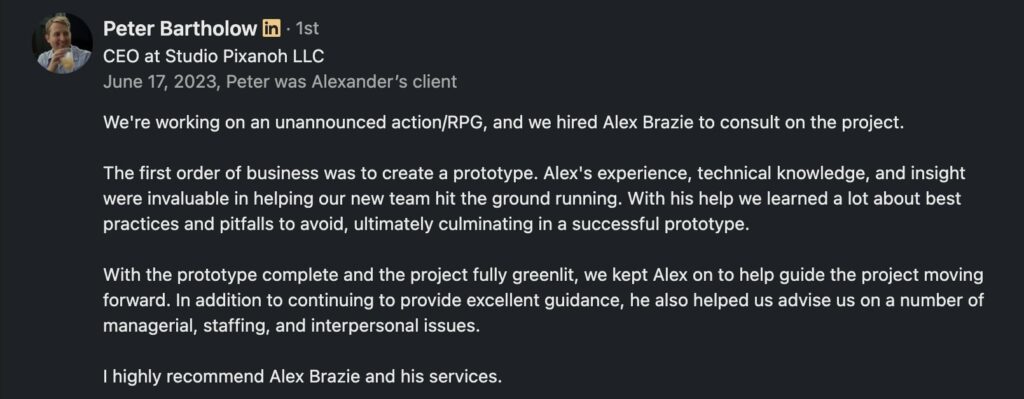Game designers are responsible for shaping a game’s vision, from gameplay mechanics to narrative elements. In contrast, game developers bring the designer’s vision to life through programming, art, animation, and other technical skills. Learn about the key differences and similarities between the roles of game designers and game developers and develop an understanding of their contributions to the game development process.
Note: Those analyzing the game industry perpetuate a misunderstanding by conflating the terms “game developer” with “game programmer”. In reality, “game developer” is an umbrella term for all types of people involved in making games—designers, producers, artists, sound designers, QA, and more (including programmers). In this article, “game developer” is meant in its broadest definition, referring to any of the roles in the development of video games.
Confusion around the role of a creative director was created by the video games industry’s move to go transmedia—borrowing terms from Hollywood. The term game design director is too long and design director is too easily conflated with roles on the art team. I prefer the term game director which can be put on the same level as an art director and tech director. When the industry was in its infancy, the designer, programmer, and developer were often the same person. As the complexity and scale of video games increased, one-person operations have become larger entities with multiple, distinct roles.
What are the differences between a game designer and a game developer?
Game designers are game developers, while game developers encompass every discipline that contributes to the game! Game designers primarily focus on why a feature should exist and refine that feature in-engine, while game developers work to implement and iterate on those features. Designers focus on a game’s vision, developing engaging ideas and gameplay mechanics, writing design documents to guide their teams, and designing and implementing the tools and systems that underpin the game. Game developers bring the project’s vision to life using a mix of programming, engine-specific knowledge, animation, sound design, art, and technical problem-solving.
The following image shows the subdivision of responsibilities between developers and designers.

While overlaps between game designers and game developers do exist, their differences become clearer when we compare the two roles according to specific vectors. The following table analyzes the roles of game designers and game developers along specific points of comparison.
| Point of comparison | Game designer | Game developer |
| Core skillset | Broad creativity/communication – A game designer’s core skills are creativity, communication, and critical thinking. Designers make decisions that shape the final experience in the players’ hands, selecting the mechanics, gameplay, narrative, look, and feel of a game. | Specific/technical abilities – Game developers bring the game designer’s vision to life using technical skills problem-solving, art, and sound design. A game developer’s core skills include animation, programming, sound design, music composition, production, QA, and engine-specific skills. |
| Vision | Creation – Game designers select the best ideas from the team’s concepts, guiding everything from visuals to genre to ambiance to mechanics. | Implementation – Game developers take the designer’s ideas and realize them in-engine as closely as possible to the original vision. |
| Technical focus | Game mechanics – A game designer ideates compelling gameplay loops and interesting progression arcs for players. | Technical functionality – Game developers make these ideas a reality using sound, art, animation, and code. |
| High-level focus | Overall creative direction – Game designers set the tone for visuals, audio, dialogue, and action. The final decisions on all creative aspects of a game rest with them. | Technical execution – Game developers turn design documents, prototypes, and conversations into fully functional video game experiences. |
| Ideas/Implementation | Idea generation – Game designers develop original ideas for settings, characters, gameplay mechanics, and core loops. | Practical realization – Game developers implement ideas from the game designers on their team, working together to iron out challenges or remove impractical features. |
| Design | Player experience design – Game designers must consider every aspect of the player experience in their creation, using their team’s skills and abilities to realize that vision. | Software engineering – Game developers, particularly programmers, use engineering principles and computer programming to build software systems that make up the player experience. |
| Problem-solving | Conceptual planning – Game directors form the original high-level idea for a game while game designers also must supply a cohesive plan for elements like visuals, audio, narrative, and moment-to-moment gameplay. | Technical problem-solving – Game developers deal with the hiccups, bottlenecks, and limitations that are the reality of turning ideas into video games. |
What is the average salary for a game developer vs. a game designer?
The average salary for a game developer in the USA is $91,607 per year, while the average salary for a game designer is $89,098 per year (according to Glassdoor’s 2024 data). Salaries for these roles vary according to location, seniority, studio size, and experience. The average salary for game developers outside the USA shows significant geographical variety, with a game developer earning an average of €38,000 per year in Dublin, $47,680 per year in Stockholm, and €15,708 per year in Shanghai.

What are the similarities between a game developer and a game designer?
The similarities between a game developer and a game designer are that both roles work to realize a cohesive player experience. The positions of game designer and game developer are subdivided into creative and technical fields. On the creative side of game design are the creative director and narrative designer—positions that share skills like creativity, communication, and critical thinking with those in development roles like artists, animators, sound designers, and writers.
The technical side of game design helps to create tools and systems that allow developers to implement content into the game. Technical game design shares similarities with technical development roles like game programming and QA because of the focus on problem-solving, number-crunching, and bug fixing.

Creative game designers and developers create the concept for a game’s mechanics and systems while technical game developers and designers make those concepts a playable reality. Both roles demand a deep understanding of gameplay mechanics and how to implement them in an engaging, player-centric way.
Game developers and game designers must understand the video game industry, including its trends, audience preferences, and platform limitations. Understanding the game industry allows designers and developers to create experiences that plug into existing market demand and avoid creating games for an already saturated market.
Can you be both a game developer and game designer?
Yes, you can be both a game developer and a game designer. Game developer is an umbrella term that incorporates programmers, artists, sound designers, QA, and more. You can start in a game development role and work into game design over time, as many do. Game design is a separate but complementary skill set to programming, animation, or sound design.
Examples of those who are both game developers and game designers include Toby Fox (Undertale) (pictured below), Eric Barone (Stardew Valley), Kim Swift (Portal), Shigeru Miyamoto (Super Mario Bros + Zelda), and Notch (Minecraft). These game designers’ development skills inform their design choices, making it easier to iterate on their ideas and work more independently.

I’m an example of someone with both game design and development skills. I can program just about any core game feature. Esoteric stuff like shaders or high-performance runtime code is hard for me—as is virtually any programming-specific specialization. But I could do a generalist programming role just fine. That said, that’s a byproduct of spending 10 years and a computer science degree focused on developing those skills. Fortunately, that skill set gave me access to modding, which allowed me to be hired more easily.
Is it easier to be a game designer or game programmer?
It isn’t inherently easier to be a game designer or game programmer—your skills and passions dictate which one is easier for you. Game design concerns itself with big-picture ideas, concepts, and creativity, making it easier for those who gravitate toward this kind of work. Game programming is more concerned with the nitty gritty of making ideas a reality, making it more suitable for those who love number crunching and problem-solving.
People think design is easier but it’s as challenging as programming in its own way. Programmers create the major blocks, making it possible to build the game structurally. The designers then lay out the blocks to form the experience, polishing the most important pieces, and adding details and layers that programmers simply aren’t trained/attuned/skilled in doing. Both game design and game development are time-consuming, highly-skilled work.












